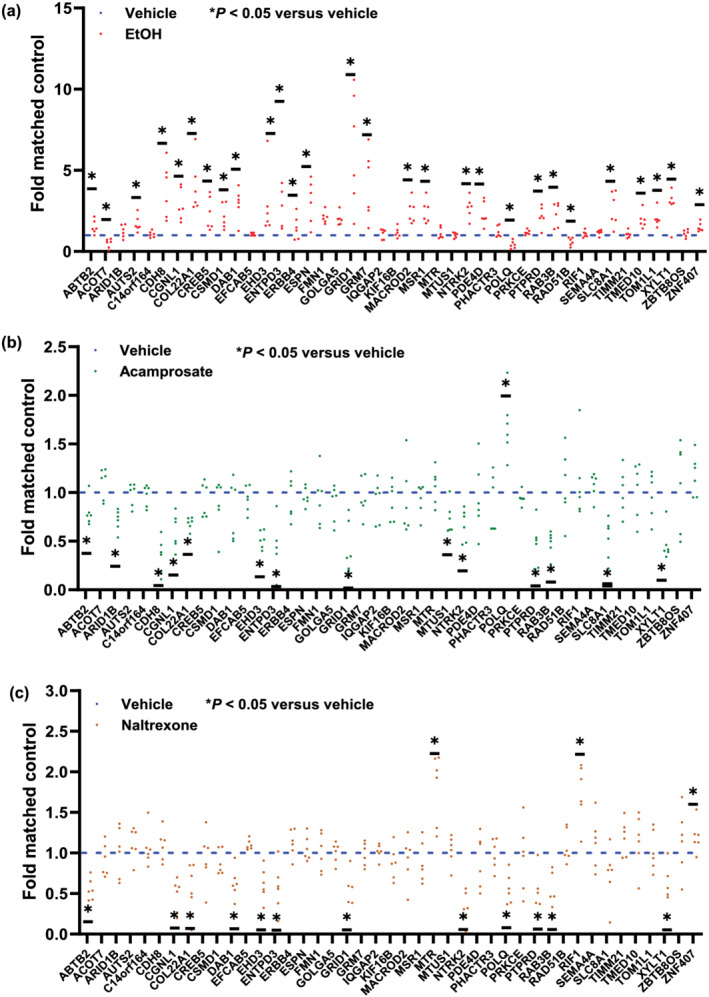FIGURE 4.

Effects of ethanol (a) or the anti‐craving drugs, acamprosate (b) or naltrexone (c), on gene expression in iPSC‐derived forebrain astrocytes for genes identified by the pharmacometabolomics‐informed GWAS shown in Figure 3. Real‐time PCR (n = 6) was used to determine mRNA expression before and after drug exposure. Specifically, forebrain‐specific astrocytes derived from iPSCs were treated with 25 mM of ethanol (EtOH), a concentration that is considered physiologically relevant for EtOH use, with 25 mM of EtOH being slightly higher than the 0.08% blood alcohol concentration often used as a measure of intoxication (Lira et al., 2020). The concentrations of acamprosate (5 μM) and naltrexone (30 nM) used to perform these experiments were selected to fall within the range of blood drug concentrations in patients taking standard clinical doses of these two drugs (Mason et al., 2002). Real‐time PCR results were analysed using 2−ΔΔct method. As a result, the control mean is 1, and there is no variance in the control. Real‐time PCR data were then analysed using non‐parametric statistical tests (Mann–Whitney U test). *P < 0.05, significantly different as indicated
